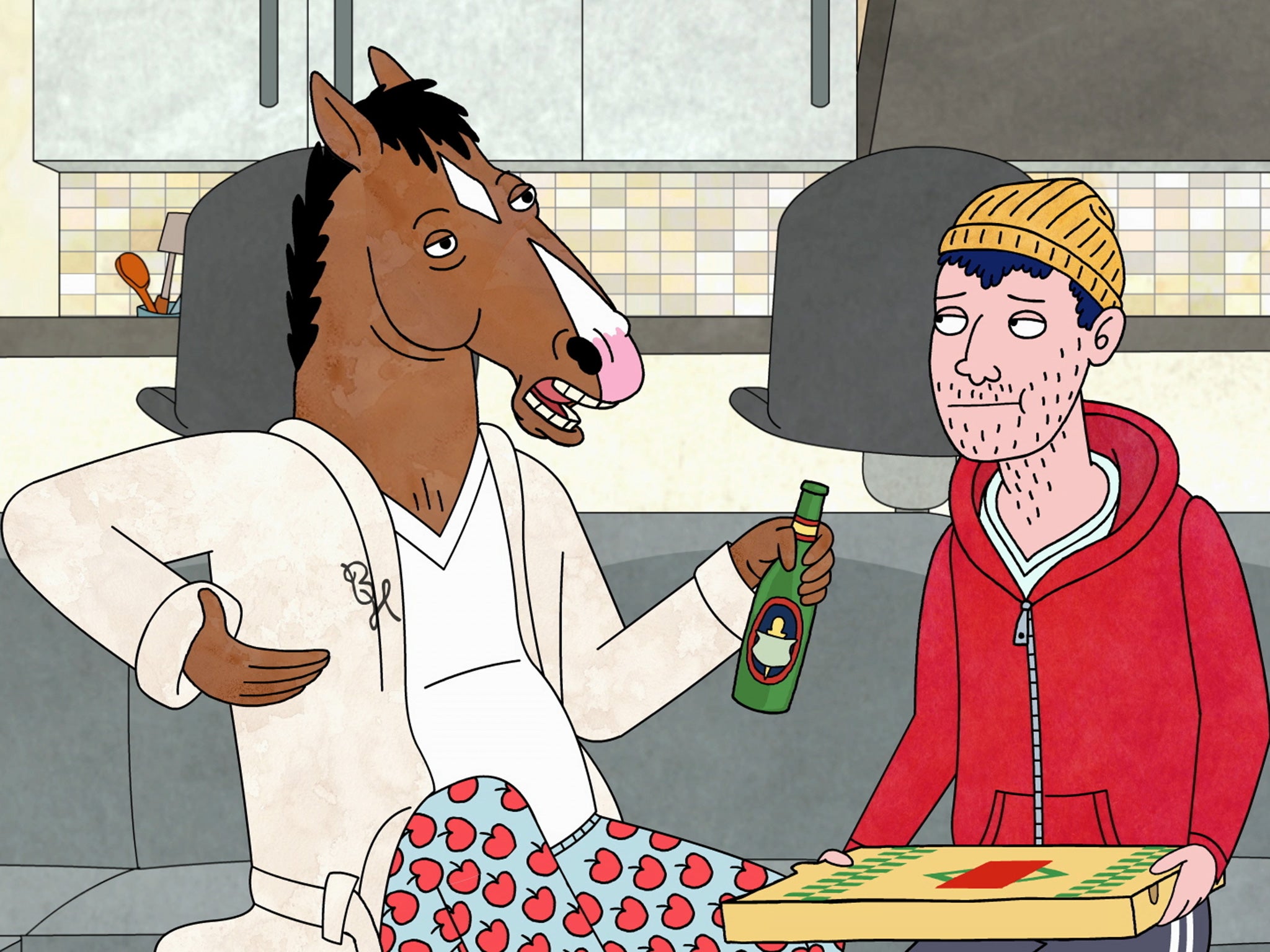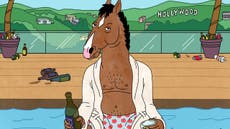BoJack Horseman - the most depressing cartoon on TV - is thankfully back for a third Netflix series
It may be unconventional and often sombre, but the comedy cartoon which is more likely to make you cry than laugh is pushing necessary boundaries

In the second series of BoJack Horseman, Diane fails to expose beloved TV star Hank Hippopotamus for years of sexual assault against female fans. The episode, which is colloquially known as ‘the Bill Cosby episode’ because of similarities with the accusations against Cosby, has a laser focus on how sexual harassment is treated by Hollywood and the media – and how powerful stars at the centre of allegations seem to be structurally protected. The sombre ending to Diane’s crusade is that she simply can’t change anything about the entrenched prejudice in ‘Hollywoo’, the show’s version of Hollywood. As she sits down to contemplate this fact, a random man leans over and tells her: ‘Smile!’
At this point, the viewer has an expectation. That expectation is one borne out by years of familiar sitcoms with triumphant standalone storylines: Diane is bound to deliver an impassioned monologue which neatly ties up the themes of the rest of the episode. She’s surely about to put the catcalling character back in his place, and to right some wrongs in society, even if the wrongs she can right are less significant than she might have hoped. Surely.
But no. Instead, she just sighs, and the credits roll.
This anticlimactic ending is typical of the BoJack Horseman set-up. Having just been commissioned for a third series on Netflix, the acclaimed animated show has never allowed itself to be constrained by TV convention. After all, this is a cartoon comedy about depression and self-loathing, where half the characters are (inexplicably) animals.
In case you haven’t jumped on board Horseman’s cult bandwagon yet, here are some quick background details: the show follows the titular BoJack, a hard-drinking star of nineties sitcom Horsin' Around, as he struggles to overcome his own narcissistic personality and intense self-loathing while reigniting his flagging career. He enlists the help of ghost-writer Diane Nguyen, who agrees to pen his autobiography. At this point, it might all be sounding a little formulaic: washed up actor battles emptiness of his own hedonistic lifestyle, meets awkward Sardonic Pixie Dream Girl and presumably discovers that life is worth living after all.
The beauty of BoJack Horseman is that it takes this set up and completely subverts it, providing a sharply funny, and at times tragically moving tale, all within the confines of a cartoon world in which a decent proportion of the population are animals.
What is perhaps most impressive is that creator Raphael Bob-Waksberg and his team have crafted a show which would have struggled to succeed in a more conventional one-episode-a-week format.
Free from any specific network affiliation, the BoJack writers are allowed to unleash their scathing view of Hollywood and the media to good effect. From the frantic, celebrity-obsessed rolling news channel 'MSNBSea' to an in-no-way-Scientology-esque cult of improv performers, the world of BoJack Horseman drips with satire, and its many sight gags (‘Famished Famished Hippos Catering’, anyone?) and small touches demand repeat viewing.
While still episodic, the show additionally eschews the large-scale cliffhangers of network TV. It knows that it doesn't have to artificially ramp up the tension to keep you hooked for another week but rather peak your interest sufficiently to keep your attention for the following 19 seconds until the next episode automatically starts. As such, it frequently employs poignant endings for its episodes.
This is a show that encourages, or demands, binge-watching. Character's arcs are played out and in jokes repeatedly referenced in a way which is ideally suited to devoting an entire day to greedily devouring the programme, rather than being rationed a mere morsel once a week.
Think that might be a David Hockney painting in Bojack's study? Pause it. Unsure if Mr Peanut Butter realised Diane is sitting opposite him? Rewind and watch it again. Have a friend who is still unsure why you keep quoting that cartoon about that horse? Tell them to clear their schedule for the weekend and find out why the most three dimensional characters not-on-television right now are a group of two dimensional animals.




Join our commenting forum
Join thought-provoking conversations, follow other Independent readers and see their replies